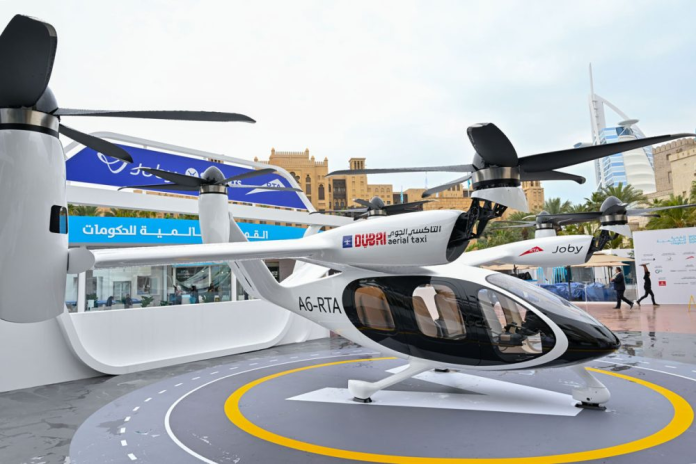UAE’s General Civil Aviation Authority (GCAA) has issued the regulatory framework allowing both electric Vertical Take-Off and Landing aircraft (eVTOLs) and conventional helicopters to operate interchangeably on the same infrastructure.
This means the existing helipads can be used for take-off and landing of eVTOLs, including flying taxis.
“This innovative regulatory framework represents a significant leap in integrating Advanced Air Mobility (AAM) solutions into existing aviation systems. It offers a cost-effective model for infrastructure development, accelerates operational readiness, and aligns with the UAE government’s directives to implement high-efficiency, non-bureaucratic solutions across various sectors,” GCAA noted in a statement sent to Khaleej Times on Wednesday.
Last month, Abu Dhabi successfully conducted a test flight of an autonomous flying taxi that took off from the helipad of Abu Dhabi Cruise Terminal. It cruised above Abu Dhabi Marina.
GCAA director-general Saif Mohammed Al Suwaidi said on Wednesday, “(The) regulatory framework does not merely enable new technology; it redefines how aviation evolves. It reflects our commitment to innovation in developing a supportive ecosystem for the growth of this vital sector and a future where advanced air mobility is seamlessly integrated into our national infrastructure.”
He noted, “By enabling dual-use between conventional helicopter pads and electric vertical takeoff and landing pads, this initiative helps accelerate implementation timelines, optimises infrastructure utilisation, and cements the UAE’s position as a leader in fostering an integrated ecosystem supporting the future of aviation.”
“As the global aviation community prepares for the next era of air mobility, the UAE continues to set pioneering standards, emphasising that possessing a bold long-term vision, advanced industrial capabilities, and a sophisticated infrastructure are the essential pillars for successfully integrating advanced air mobility,” addd Eng. Aqeel Al Zarouni, GCAA assistant director-general for aviation safety affairs.
Futuristic urban mobility
Meanwhile, on Monday, Dubai successfully conducted the first test flight of a flying taxi developed by Joby Aviation, setting the stage for a commercial rollout expected in the first half of 2026.
The test flight took place at Joby’s test facility at the Dubai Jetman Helipad in Margham, along the Dubai–Al Ain Road.
Anticipation flying taxis that are expected to add a new premium service for residents and visitors seeking smooth, fast, and safe travel to key destinations across the city.
Mattar Al Tayer, director-general and chairman of the board of executive directors at Dubai’s Roads and Transport Authority (RTA), earlier noted: “A journey from Dubai International Airport to Palm Jumeirah, for example, is expected to take just 12 minutes, compared to approximately 45 minutes by car.




